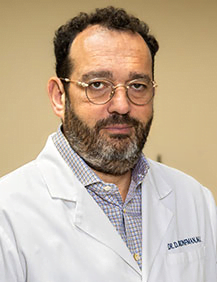The Only NYS Approved by
DOH Surgical Facility
*Same Day Appointments & Walk-Ins Welcome
The Only NYS Approved by
DOH Surgical Facility
*Same Day Appointments & Walk-Ins Welcome

Even though labor and childbirth present a normal process for a pregnant woman sometimes not everything goes well and even physical injuries of the infant occur. Luckily the incidence of birth injuries is decreasing every day more and more due to the fact of an increase of C-section deliveries.
A traumatic delivery which will result in injuries to the infant is more likely to occur in cases when the baby is large, it’s not presenting with its normal position in the birth canal, the pelvis of the pregnant women is small, etc. The labor process and the fetal condition should be always monitored closely and if any fetal distress is detected, the baby should be delivered as quickly as possible, mostly immediately with a C-section.
However, every time when there is a big possibility that vaginal birth can’t go well, a planned C-section should be performed (Read also: Prenatal Tests).
Injuries of the fetus usually include:
Extra – cranial head injuries – are common injuries of the fetus during delivery, usually presenting minor birth injuries. However, sometimes even serious fetal injuries can occur. Some of the most common types of extra – cranial head injuries include: scalp abrasions, caput succedaneum, head molding, cephalhematoma, etc.
Spinal cord injuries – are very rare, mostly involving a variable degree of cord disruption, while a complete spinal cord disruption is very rare (Learn more: Pregnancy Ailments). This kind of injury usually occurs in breech deliveries when there is a longitudinal traction of the spine. The injuries often include the lower cervical region of the spinal cord, while higher injuries are mostly fatal due to compromised respiration.
Facial nerve injuries – presents an often injury of the fetus during childbirth. It is mostly caused by forceps pressure in assisted childbirth. However, some injuries may result also from the pressure on the nerve in utero due to the position of the fetus while inside of the mother’s uterus. This injury usually resolves within 2 or 3 months after birth.
Brachial plexus injuries – usually occur in cases of shoulder dystocia, when the baby’s shoulder (one or both shoulders) gets trapped behind the pelvic bones of the mother, once the head is delivered. The brachial plexus injury may involve only the upper part of the brachial plexus, the lower part of the brachial plexus or even the entire brachial plexus. The type and location of the injury determines its prognosis and recovery (Learn more: 3D Ultrasound Imaging).
Bone fractures – the fractures of the clavicle are more common, especially in cases of shoulder dystocia. Most of these clavicle fractures heal very quickly, within two weeks due to the fact that they are greenstick fractures. Fractures of the humerus and femur are also possible, mostly in cases of difficult deliveries. Most of these fractures are also greenstick fractures and their recovery is quick and without any long term complications.
Soft – tissue injuries – all soft tissues can be injured during birth. Edema and ecchymosis often follow the injuries of the soft tissue. The birth injuries are more likely to occur in the periorbital and facial tissues, when the baby has facial presentation. In breech presentations, the soft tissues of the perineal area and scrotum in male infants, perineal area and labia in female infants is more likely to get injured.

Dmitry Bronfman, MD, is a board-certified gynecologist who specializes in all aspects of contemporary women’s health, preventive medicine, pelvic pain, minimally invasive and robotic surgery, and general, adolescent, and menopausal gynecology.
Brooklyn Abortion Clinic